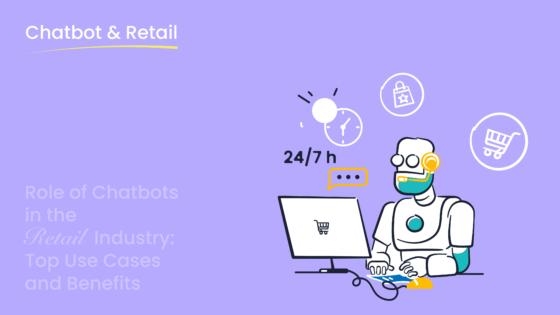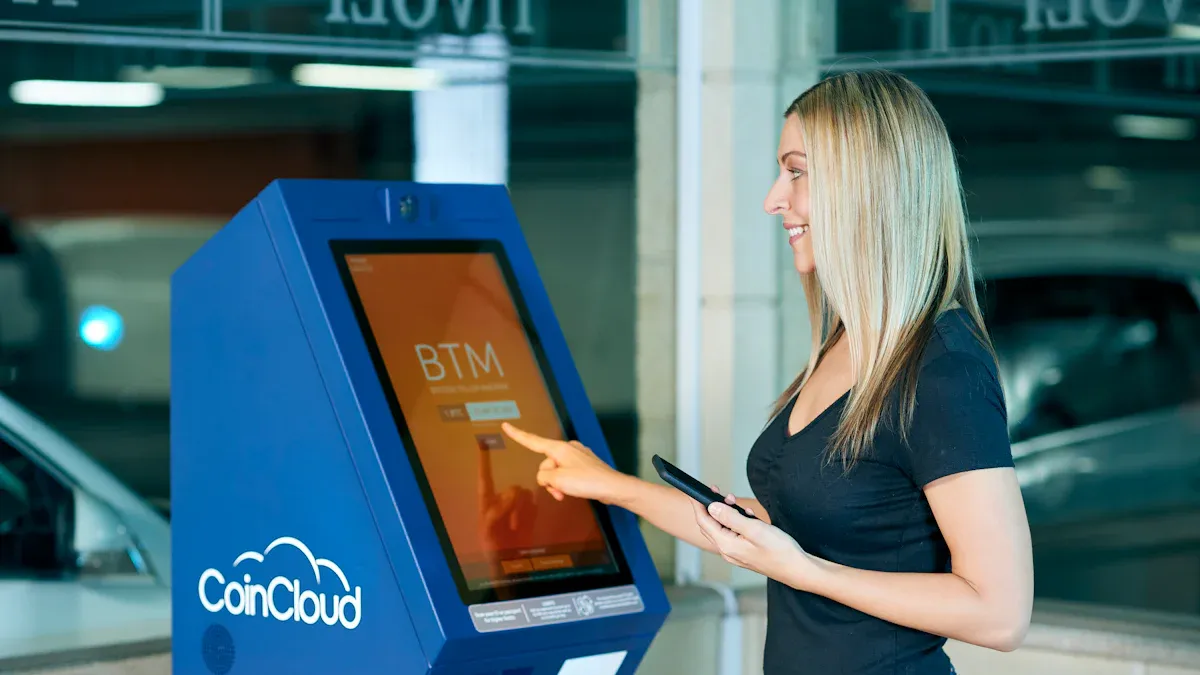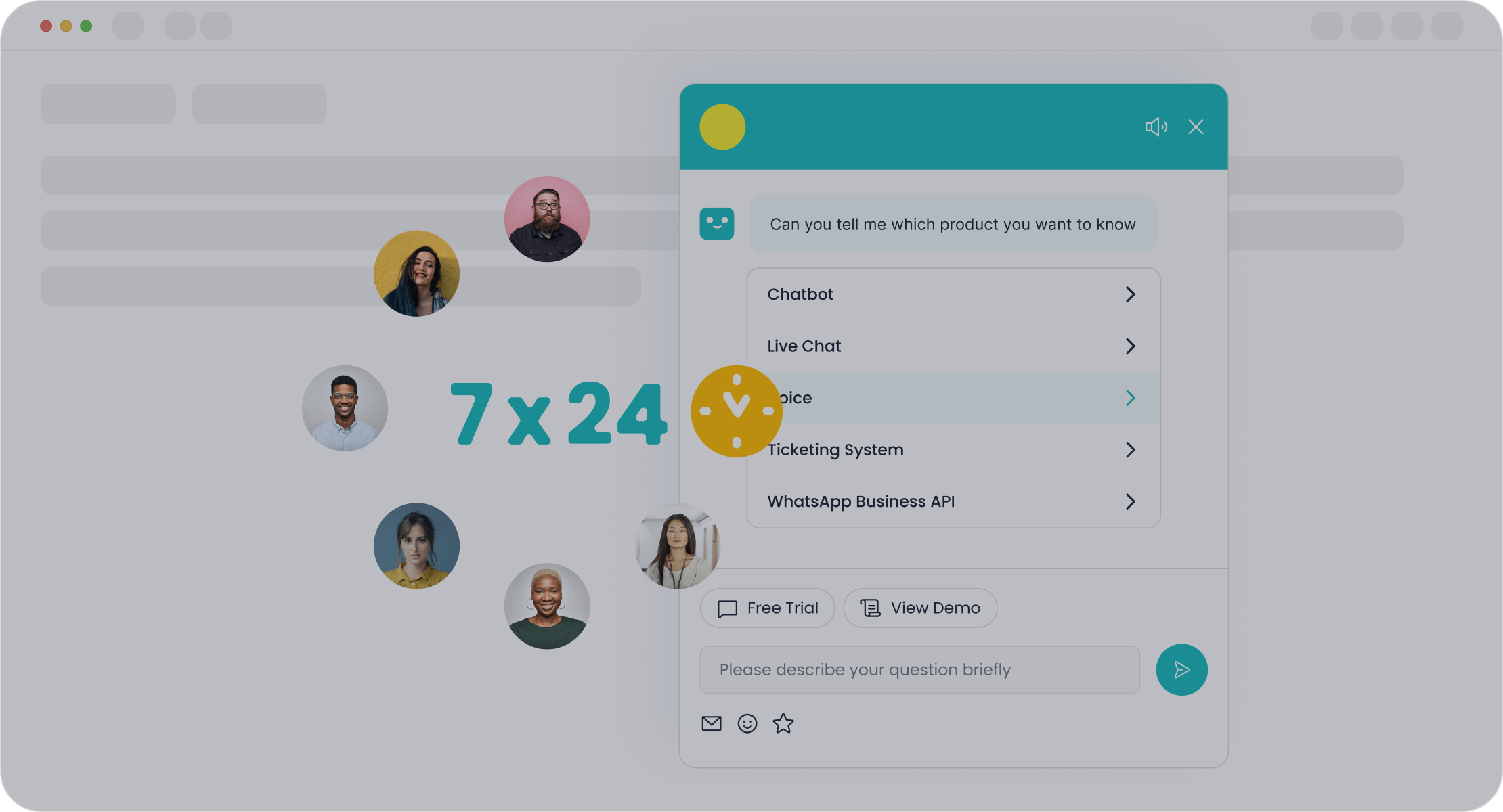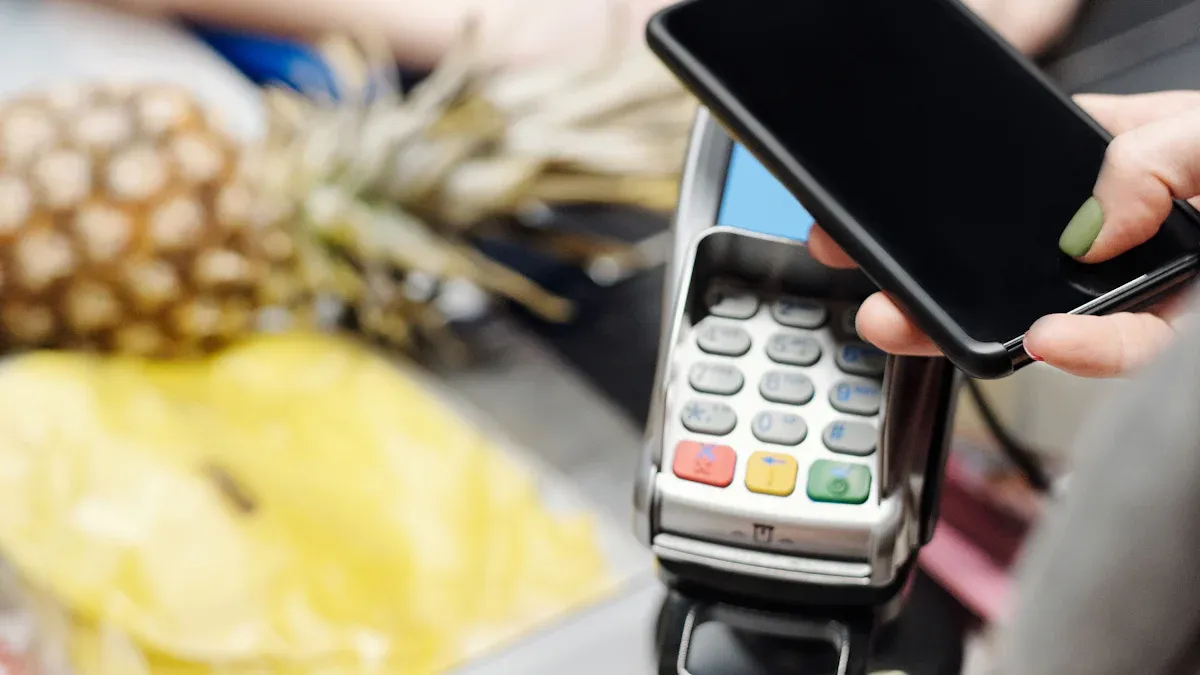How AI Self-Service Powers Analytics in Self-Checkout Systems

AI self service is changing how you use self-checkout systems in retail. The global retail self-service kiosk market is set to grow from USD 4.2 billion in 2024 to USD 12.0 billion by 2033, showing the rapid adoption of artificial intelligence and data-driven solutions (source). With ai, you see faster checkout, fewer errors, and a better customer experience. Self-checkout systems use analytics and real-time data to improve accuracy and efficiency. Sobot leads this shift with Sobot AI, helping you get more from your checkout and customer data while making every experience smoother.
AI Self-Service in Retail

AI self service is changing how you shop and pay in the retail industry. You now see self-checkout technology in many stores, making your shopping faster and easier. Retailers use artificial intelligence to power these systems, helping you scan, pay, and leave with less waiting. AI self service helps stores cut costs, reduce errors, and give you a better experience.
Sobot Chatbot for Self-Checkout

Sobot’s AI Chatbot stands out as a smart tool for automated self-checkout. When you use customer self-checkout, the chatbot can answer your questions, guide you through the process, and solve problems right away. You do not need to wait for a staff member. Sobot’s chatbot can handle up to 70% of customer requests, including FAQs and troubleshooting. This means you get help faster, and stores save money. For example, businesses using AI chatbots like Sobot have seen up to a 30% drop in service costs and a 40% decrease in wait times. Some companies even report a 67% boost in sales conversions because customers get quick, personal help. Sobot’s chatbot also collects data on what customers ask, helping stores improve their checkout and support over time.
Tip: Sobot’s chatbot works 24/7, so you can get help any time you use self-checkout machines.
Key Technologies
You find several key technologies behind ai self service and automated self-checkout.
- Computer vision lets self-checkout systems recognize products, even without barcodes. This helps you scan items quickly and prevents mistakes.
- Machine learning powers real-time analytics, fraud detection, and personalized recommendations.
- RFID technology works with computer vision and AI to make returns and checkout smoother.
- Voice-activated self-checkout uses natural language processing, so you can talk to the system if you have trouble with touchscreens.
- Mobile checkout uses AI and computer vision to let you scan and pay with your phone.
- Real-time analytics track sales, inventory, and customer behavior, helping stores keep shelves stocked and improve your experience.
These technologies make ai-driven automated checkout fast, safe, and easy. They also help stores spot fraud, update inventory, and give you special offers based on your shopping history. For example, computer vision can catch if someone tries to skip scanning an item or switch barcodes. AI self-checkout technology also helps stores manage stock and plan store layouts to reduce lines and improve traffic flow.
Note: A 2023 survey found that 66% of U.S. shoppers prefer self-checkout for its speed and convenience, with younger shoppers leading the way but more older shoppers using it too (PYMNTS/Toshiba). This shows that ai self service and automated self-checkout are becoming popular with all ages.
Self-Checkout Systems and Analytics
Data Collection
When you use self-checkout systems, you help create a stream of valuable data. These systems collect information every time you scan an item, pay, or ask for help. AI-powered self-checkout uses machine learning to analyze your transactions and shopping behavior in real-time. This means the system can spot unusual item combinations or pricing errors right away, which helps prevent theft and mistakes. Your purchase history and preferences are also processed to give you personalized offers and loyalty rewards. If you buy age-restricted products, AI can verify your age automatically, making the checkout process smoother and more secure.
Self-checkout systems also monitor for security threats and fraud. They track every transaction to help stores manage inventory, set prices, and decide how many staff members to schedule. For example, Sobot’s AI solutions collect and process data from every checkout, helping retailers understand what customers want and when they shop most. This data analytics approach helps stores keep shelves stocked and improve your experience.
Tip: The more you use self-checkout, the smarter these systems become at predicting what you need and making your shopping faster.
Real-Time Insights
Real-time data analytics give stores a powerful advantage. When you check out, the system instantly tracks what you buy, how long you wait, and even how you move through the store. This real-time information helps stores spot trends, like sudden spikes in sales for certain products or longer lines at specific times. Retailers can then adjust inventory, open more checkout lanes, or send staff where they are needed most.
Self-checkout systems use real-time data to improve efficiency and customer satisfaction. For example, computer vision can scan shelves and alert staff when stock runs low, saving time and reducing errors. AI-powered analytics also help stores personalize your experience by offering targeted promotions based on your shopping habits. Sobot’s AI platform provides these real-time insights, helping businesses optimize checkout flow and boost operational performance.
| Analytics Type | Description | Use in Retail Operations Optimization |
|---|---|---|
| Operational Performance Data | Sales, inventory turnover, customer satisfaction | Identifies areas for improvement |
| Self-Transaction Data | Data from self-checkout usage | Reduces labor costs, streamlines checkout |
| Customer Experience Data | Service consistency, error reduction, checkout speed | Drives repeat sales and higher profits |
Note: Nearly half of retailers expect AI-powered self-checkout to deliver a 21–50% ROI within three years, thanks to efficiency gains and better customer satisfaction (source).
AI Self-Checkout Benefits

Efficiency and Speed
You want a checkout process that is fast and easy. AI self-checkout systems deliver this by using advanced technology to speed up every step. When you scan items, computer vision recognizes products—even those without barcodes. This means you do not waste time searching for codes or waiting for help. AI can process damaged or unreadable labels, so you move through checkout quickly. Real-time inventory updates let stores restock shelves right away, which keeps products available for your next visit.
Here are some ways AI self-checkout boosts efficiency and speed:
- Transactions happen up to 40% faster because AI reduces the time needed to identify items.
- Wait times drop as computer vision and machine learning handle more tasks without staff help.
- Fewer errors occur, so you spend less time fixing mistakes at checkout.
- Retailers save money by needing fewer staff at each station.
Sobot’s AI solutions help stores reach these goals. For example, OPPO used Sobot’s chatbot and saw an 83% resolution rate for customer questions, which led to a 57% increase in repurchase rates. This shows how AI can make the checkout process smoother and more efficient for both you and the store.
Tip: AI self-checkout systems also improve fraud detection, making your shopping safer and more reliable.
Customer Experience
A great customer experience makes you want to return to a store. AI self-checkout systems help by making checkout simple and stress-free. You can fix most mistakes yourself when the system gives you a gentle nudge. This reduces delays and keeps lines moving. AI recognizes fresh produce and other tricky items, so you do not have to search menus. This makes checkout up to four times faster for these products.
You also see fewer staff interventions. Employees can focus on helping you with bigger problems or making the store a better place to shop. At Intermarché in France, employee interventions dropped by 15%, saving thousands of staff hours. Staff now spend more time engaging with customers, which improves the overall experience.
Sobot’s AI-powered chatbots support you during checkout by answering questions and solving problems instantly. Brands like H&M and KFC use Sobot’s solutions to handle returns and offer personalized suggestions, which leads to higher satisfaction and a better shopping experience.
Note: AI self-checkout systems help you finish your shopping faster and with less hassle, making every visit more enjoyable.
Challenges in AI Self-Service
Privacy and Security
You trust self-checkout systems with your personal data every time you shop. These systems use ai to collect information from cameras, sensors, and payment methods. Protecting your privacy and keeping your data safe is a top priority for retailers. Many stores use strict standards like ISO 27001 to manage data securely and build trust with you.
Here is a table showing the main privacy and security concerns in ai self-service:
| Concern Type | Description |
|---|---|
| Security | Computer vision helps stop theft and fraud by spotting suspicious actions and reducing losses. |
| Privacy | Handling sensitive data from cameras and sensors is a big challenge. Standards help protect it. |
| Ethical | Avoiding bias in ai and making fair recommendations is important for everyone. |
| Privacy-preserving Techniques | Blurring faces or changing video data at the source keeps your identity safe. |
| Integration Challenges | Balancing efficiency with privacy means ai must adapt without risking your data. |
Retailers must follow rules like GDPR to protect your rights. These rules require stores to explain how they use your data, let you control it, and keep it safe. Sobot’s ai solutions use privacy-preserving techniques, such as transforming raw camera data to remove personal details. This helps with fraud detection and prevention while keeping your information private. Sobot also uses encryption and regular audits to ensure compliance and security.
Tip: Regular staff training and clear privacy policies help stores keep your data safe and maintain your trust.
Adoption Barriers
You may wonder why some stores do not use ai self-service yet. Many face technical and organizational barriers. Old systems often do not work well with new ai technology. Data silos and poor data quality make it hard for ai to work smoothly. Stores need to invest in better infrastructure and train staff to use these new tools.
Some employees worry about losing their jobs or do not trust ai. Customers may also feel uneasy if they do not understand how ai works. Stores must be open about using ai and explain its benefits, like faster fraud detection and prevention. High costs and uncertain returns can slow adoption. Many retailers struggle to measure the value of ai in the first year.
To overcome these barriers, stores should:
- Unify data streams and improve data quality.
- Train staff and manage change carefully.
- Use ethical ai and follow privacy laws.
- Work with trusted partners like Sobot, who offer secure, compliant ai solutions for self-checkout and customer service.
Note: Transparency and clear communication help you feel comfortable with ai self-service and support its adoption in more stores.
Future of AI Self-Checkout
Trends in Retail
You will see big changes in self-checkout systems as technology grows. Many stores now use ai-driven computer vision to recognize items without barcodes. This makes your checkout faster and helps stop theft. Stores use ai to track inventory with real-time data, so shelves stay stocked and waste goes down. You get more personal offers because ai connects with loyalty programs and uses your shopping data to suggest deals just for you.
Here are some trends shaping the future of self-checkout:
- Computer vision lets you scan items quickly, even if they do not have barcodes.
- Ai helps stores predict what products you will want, so they can order the right amount.
- Self-checkout systems use machine learning to spot fraud and keep your payments safe. Some even use facial recognition or fingerprint scans.
- Speech-to-text technology makes self-checkout easier for everyone, including people who have trouble using touchscreens.
- Ai-powered chatbots answer your questions right away, making your shopping smoother.
Note: These trends show that ai is turning self-checkout into a smart, safe, and personal experience for every shopper.
Sobot’s Vision
You can expect Sobot to lead in ai self-service by focusing on innovation and your needs. Sobot uses generative ai and advanced platforms to give you instant help, 24/7 support, and easy answers to your questions. The Sobot chatbot works with human agents, so you get fast help for simple problems and expert care for complex ones. This teamwork means you spend less time waiting and more time enjoying your shopping.
Sobot’s approach brings real results. Stores using Sobot see a 30% jump in customer satisfaction and a 45% rise in self-service use. Automation handles 70% of interactions, and average handling time drops by 40%. You get better service any time of day, and stores see up to 20% more sales. Sobot also helps employees by letting them focus on important tasks, not just routine work. This makes jobs more rewarding and helps stores keep good workers.
Tip: Sobot’s ai solutions keep your data safe and private, using strong security and regular checks. You can learn more about Sobot’s commitment to innovation and customer experience at Sobot’s official website.
You see how AI self-service, like Sobot’s Chatbot, is changing self-checkout and analytics in retail. AI-powered checkout systems now recognize products, apply discounts, and prevent fraud in real time. You benefit from faster checkout, fewer errors, and a better customer experience. Retailers use smart analytics to optimize checkout flow and inventory. As AI continues to grow, you can expect even more secure, efficient, and personalized checkout solutions that keep raising the standard for customer service.
FAQ
What is an AI self-service kiosk?
An AI self-service kiosk lets you scan, pay, and get help without waiting for staff. These kiosks use computer vision and machine learning to recognize products, prevent errors, and speed up checkout. Many stores use them to improve your shopping experience and reduce costs.
How does Sobot improve self-checkout kiosks?
Sobot provides AI chatbots that work with kiosks to answer your questions and solve problems instantly. You get 24/7 support, faster help, and fewer mistakes. Sobot’s solutions help stores handle more customers and collect data to improve service. Learn more at Sobot’s website.
Are AI kiosks safe for my personal data?
Yes, most kiosks use strong security methods like encryption and privacy-preserving techniques. Sobot follows strict rules, such as GDPR, to protect your information. Regular audits and staff training help keep your data safe and private.
What are the main benefits of using kiosks in retail?
You get faster checkout, fewer errors, and more personal offers. Kiosks help stores save money and keep shelves stocked. For example, stores using AI kiosks report up to 40% faster transactions and higher customer satisfaction (source).
Can kiosks help with customer support?
Yes, kiosks with AI chatbots can answer common questions, guide you through checkout, and help with returns. Sobot’s chatbot supports many languages and works across different channels, making it easy for you to get help anytime.
